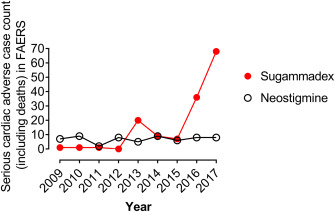I think it's going to have to be one of those thing that people who use sugammedex just have to keep in the back of their heads. I've only been seeing case reports and I'm not sure anyone knows the mechanism by which it happens.
Is it going to evolve into maybe we should give 0.2 mg of glycopyrrolate prior to the sugammadex? I mean the complication might be rare, but it is not exactly benign and perhaps we could minimize it even further.

